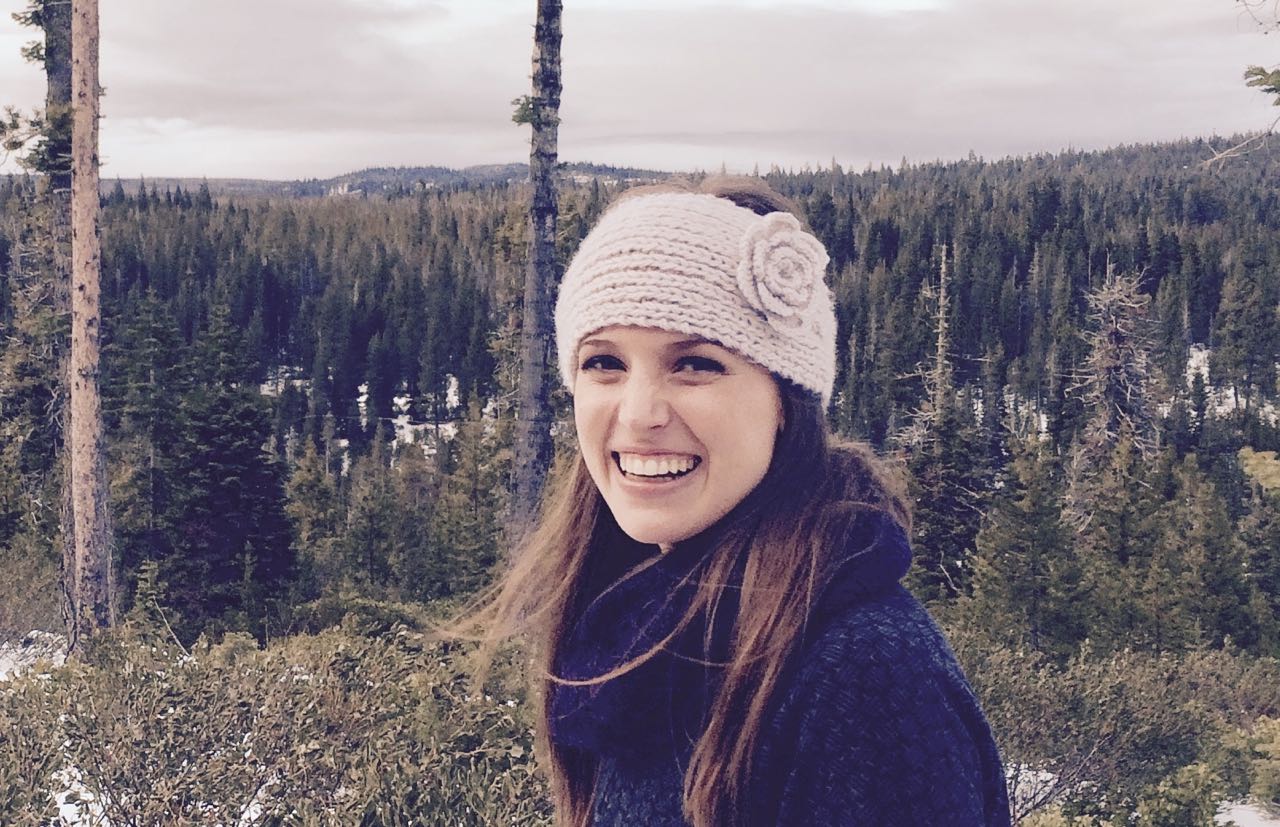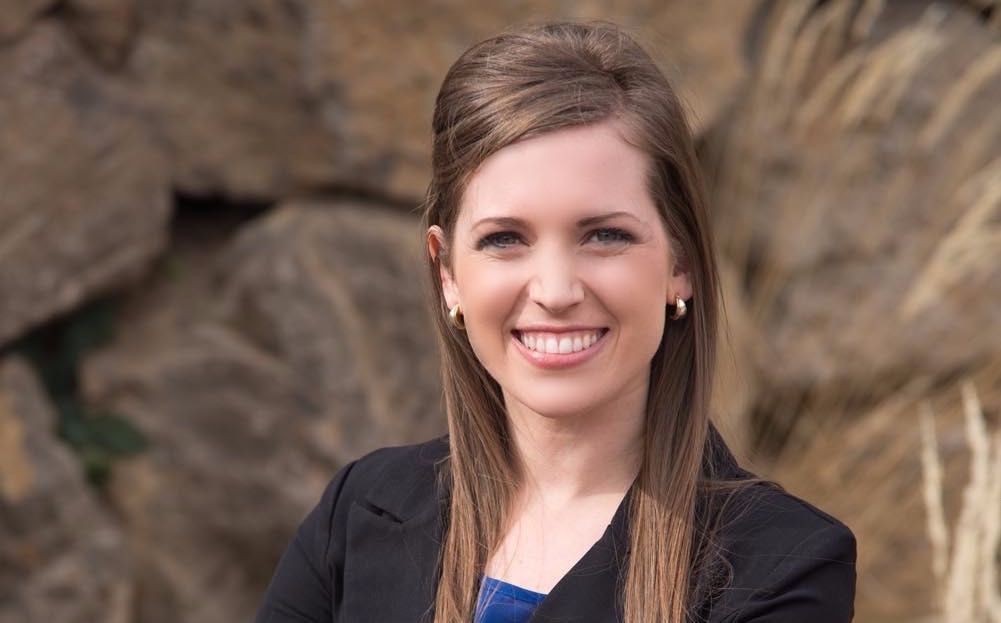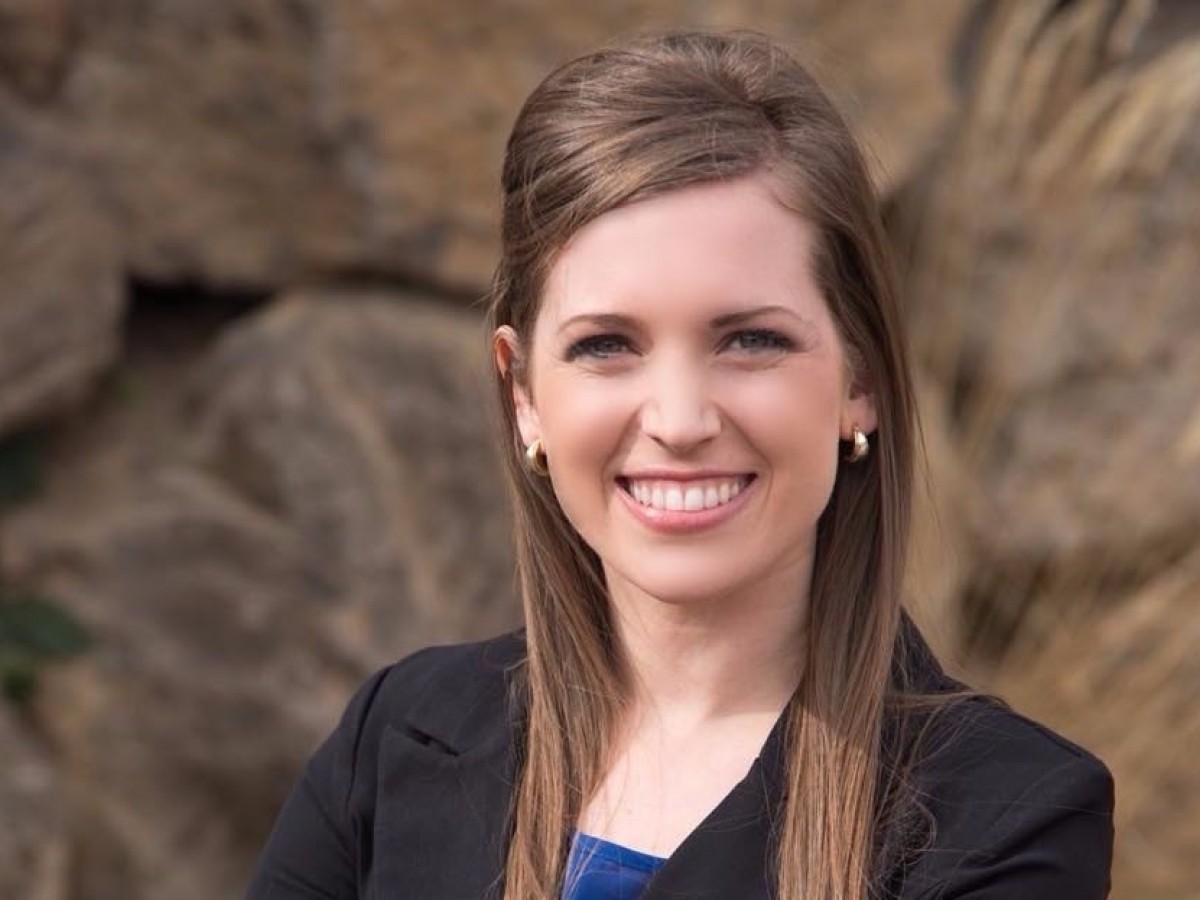Profiles in Flourishing - Rachel Madore On Beating Mold: How She Went From Broken to Brave and From Sickness to Success.
In 2012, I was so sick that I didn't want to live anymore. I could barely take care of myself, much less pursue my dream of becoming a mom or pursing a normal twenty-something lifestyle. What I didn't know at the time was that one day I would not only recover my health, but be given the opportunity to help others recover theirs as well. —Rachel
Rachel Madore has been through it all: chronic fatigue, thyroid dysfunction, autoimmunity, mold biotoxin illness and multiple food allergies.
Yet today, she flourishes.
Rachel is now a Certified Transformational Nutrition Coach and Certified Gluten Practitioner. Her practice, Simply Radiant Coaching, LLC, helps chronically ill women recover their health and navigate life’s challenges so they can feel radiant again.
So how does a transformation like Rachel's take place? How did she go from health crisis to health creativity, from sickness to success?
I'm guessing you're as curious as I am. So I caught up with Rachel this week at Starbucks to get the whole story.
Rachel is organized when I arrive. She has notes. (Nobody ever has notes). She's even reserved a conference room for us. As I begin my questions, she smiles in a way that takes up her whole face, crinkling her eyes.
BioFlourish: So in a nutshell, what happened? How did you go from sickness to success?
Well, in 2011, I moved into a home that had toxic mold. I became very sick: chronic fatigue, thyroid dysfunction, autoimmunity, and multiple food allergies. In fact, I had so many symptoms and triggers that it made getting a diagnosis difficult. I went to over 14 doctors and tried countless treatments before I was finally diagnosed with mold biotoxin illness by a knowledgeable provider.
As soon as I was put on a mold illness protocol, I began feeling better—for the first time in two years!—and my two-page list of symptoms resolved.
Since then, I've made it my personal mission to share what I've learned with others who are seeking to overcome mysterious or complex health issues related to mold biotoxin illness, autoimmune disease, gluten-related disorders, thyroid dysfunction, or chronic fatigue.
What was your WORST moment?
My worst moment was the night that I realized I had been chasing the wrong thing for 2 years! I had worked so hard at finding a diagnosis and it was right under my nose the whole time. It was terrifying to realize that the very roof over my head wasn’t safe and that I needed to get out of there right away. I felt betrayed, horrified, and completely overwhelmed.
What was your AH-HA moment?
My AH-HA moment was when I went on vacation to Bend, Oregon. I realized that nearly all my symptoms had vanished during my visit from Portland. It was then that I connected the dots about mold taking such a toll on my health and my life. I knew I needed to make some changes to regain my health, even if it meant moving.
Moving to a high desert climate and taking mold avoidance seriously was one of the best decisions that I could’ve made because that’s when my real healing began.
So you had to leave your old support system and build a new one. What was that like?
Hard.
But I was extremely proactive because I knew it's what I had to do. I dove right in. I was very outgoing and that made a tremendous difference.
Honestly though, for a while it was quite isolating because not only did I have these multiple food allergies but I had to watch every home and building I went into. People would invite me over and I had to find out how old their place was, so I didn't get re-exposed. So that made me feel very lonely in the midst of meeting new people who were amazing.
I think isolation is one of the real suffering points for people with chronic illness, don't you? Especially if they have environmental sensitivities like food, perfumes, scented candles, cats, Windex, mold, whatever. People can feel like they are in their own leper colony of one. It's not that they don't want interaction, it's that interaction often makes them sick.
Yes. So true. Honestly for a while I felt very traumatized. I was living my life almost in a phobic state. Because I had been so sick and I knew that feeling. I wanted to prevent it at all costs. It was just so terrifying for me. Every time I went into a new place I would think, am I going to get sick, am I going to get sick?
This was new for me. I wasn't phobic as a child.
It sounds like illness can change your personality. Like coming home from Vietnam?
Yes. I think realizing and noticing my emotions has been a process for me, like noticing: oh, I'm feeling anxious right now. Interesting. I've never had to be this self-aware before, like a trauma survivor, having to go back into that place where you had the trauma and just be with it. Gently.
How old does a building have to be before you start thinking about mold?
In general I say no older than 1990s as a rule of thumb. But I've gotten sick in buildings only a few years old if they've recently had a pipe burst or flood.
Do you have a mental checklist you go through?
Yes.
Here's what I do: I step inside a building and notice what I smell and then I look at the ceilings. If I notice those coffee-like stains on the ceiling, I know there's been water damage which means there could be mold.
I took extra precautions while I was healing so I wouldn't have setbacks. It wasn't until I didn't go into a single place with possible mold that I finally began to heal. I can now re-enter some places that used to make me sick. I can't tell you how hard it was missing Christmas a few years ago because my own parent's house made me sick. But since regaining my strength and health, I don't react there.
But I would never go into a place that I knew had active mold. For instance, there's a 100 year old beach house my family used to rent for vacations and I always felt like a piece of work there and could never figure out why. Looking back, it all makes sense. The coast seems to be one of the worst places for mold unfortunately.
The Locations Effect is a GREAT resource written by and for mold illness victims to know which places people have reacted to and which ones are safe. It's a great resource for those who are fearful of exposure while traveling. I usually always ask about a home or building beforehand, just like I would ask to know whether there are allergy friendly dietary options. If I know a place doesn't sound good or look good on google maps, I play it safe and don't go. It sucks but getting sick sucks more!
What gets you the most FIRED up about all this?
I get fired up every time I hear tragic stories of people who've been victimized by mold and other complex conditions and who are not getting the help that they need in our healthcare system. This is why I’ve made it my mission to help the chronically ill recover their health and navigate life’s challenges so they can feel good again.
Let's zoom in on your symptoms. In your video, you say your symptoms started in high school and were initially related to gluten. Which symptoms were those exactly?
My gluten intolerance symptoms were mainly chronic fatigue, depression, headaches, and keratosis pilaris (chicken skin). Although I hated these symptoms, I was still able to maintain a fairly normal and functional life with them.
In what way did your symptoms differ when you moved into the moldy home?
Once I moved into the moldy home, my symptoms became debilitating. They reached a severity I had never experienced before, including severe brain fog, fatigue, crying spells, crippling anxiety, depression, nausea, night sweats, migraine headaches, vertigo, and chills.
I also experienced reoccurring appendicitis over a 6-month period before having an appendectomy and all kinds of infections including yeast infections, sinus infections, staph infections, and a fungal infection.
Sometimes when I would walk into another home that had mold, the hair on the back of my neck would stand up, alerting me that I needed to get out of there. I began feeling like I was dying and had a restlessness that I couldn’t explain.
I finally reached a point where I was so miserable that I didn’t want to live anymore and prayed, “Heal me, or take me home.”
How long did it take you to figure out what was going on?
My symptoms actually began my freshman year of college, so I was exposed for a total of 5 years before I figured it out. As a student, I spent most of my time at home on my computer. Then I’d go swing dancing in the evenings in old run down buildings, keeping me perpetually exposed wherever I went—home, school, church, and dance.
How did you learn more about the root cause of your illness?
A lot of what I learned at first came from my own experience of trial and error, but after I'd made some progress, I realized that I wanted to become a coach full-time. So I decided to attend The Institute of Transformational Nutrition to become a Certified Transformational Nutrition Coach (CTNC). There, I not only learned nutrition but also psychology, spirituality, and transformational coaching. But I didn't feel like I was done. I wanted to take my education to the next level and become an expert in chronic illness, so I received additional training from Holistic Nutrition Lab's Digestive Intensive, and Hashimoto's Institute, as well as Tom O’Bryan’s training for becoming a Certified Gluten Practitioner.
What does a day in the life of a coach look like for you? Let's say I'm a client. Where do you start with me?
A day in my life as a coach includes individual and group coaching, writing/blogging, social media posts, learning/research, product creation, client follow up, and marketing.
I love being able to share what I’ve learned in order to better the lives of others. I love to instill hope and joy.
If you came to me today I would start with a comprehensive case review. I would go over your entire health history and intake forms, gathering as much information as I can. I like to get a good impression of what's going on with your health. You would share your story and based on our findings and your specific goals, we would create a customized care plan with action steps.
For example, we might identify food sensitivities using an elimination diet or do appropriate testing to help us know which direction to go in first to help you feel better as soon as possible. We’d follow up at least every two weeks to review your progress and re-evaluate our care plan. We’d continue to build healthy habits into your life along with healthy coping skills and strategies, diet, and lifestyle changes. I would incorporate transformational coaching, psychology, and spirituality into our sessions in order to help you maximize lasting wellness in every area of your life.
What labs do you evaluate and why?
I look for mold illness markers, HPA axis dysfunction (stress response), thyroid dysfunction, gut dysbiosis and pathogens, leaky gut, genetic markers like MTHFR, nutritional deficiencies, lyme disease, gluten sensitivity, viruses, heavy metals, and autoimmune disease.
I’ve learned that chronic illness is generally never caused from just one thing. If it were that simple, people would’ve already figured it out. It’s the people with complex conditions and multiple underlying factors who can’t seem to figure out why they’re sick. These are the clients who come to me, knowing that I am dedicated to helping them uncover the root cause of their illness.
Tell me more about your background in spiritual formation.
I tell people spiritual formation is like life coaching with an emphasis on faith. Spiritual formation taught me how to help others find meaning and beauty in ordinary and difficult circumstances.
How do you use spiritual formation in your practice?
I serve as an active listener and co-discerner. I try to draw out the soul of a person and speak words of wisdom and truth as appropriate. I use a holistic approach that focuses on the whole person. I want to empower them with the physical, emotional, and spiritual coping skills they need to achieve both wholeness and wellness.
Tell me about your habits and routines. What's the first two hours of your day look like?
Self care has never come easy to me. I have to intentionally schedule it into my day.
I start my day by drinking a full glass of water with my morning supplements. Then I begin my self care routine of Bible reading, prayer, and reflection with a cup of hot lemon water.
Then while getting ready and eating a healthy breakfast, I listen to a podcast or music playlist. I find that how I start my day sets the tone for the whole day. If I skip self care, I feel unmotivated and scattered the rest of the day.
What are your health goals right now?
My current goal is to achieve wholeness in every area of my life in order to be the best that I can be. Although I don’t have to work as hard at feeling good anymore, I know the value of consistent investment into nourishing my body, mind, and soul. Coaching helps keep me accountable and compassionate towards myself and those who are struggling.

What does your diet look like?
I have endured a strict autoimmune paleo diet for two whole years.
However, since healing my gut, I have been able to reintroduce a number of foods without symptoms with the exception of gluten and dairy, which I will avoid for life.
Here’s a peak into what I eat on an average day:
- Breakfast: Green smoothie, overnight GF oatmeal, bone broth, or goat yogurt
- Snack: Chopped cucumbers with vinegar, apple with nut butter, kale chips, or tamari crackers with hummus/goat cheese
- Lunch: Green salad with meat, collard green lunch wrap
- Dinner: Spaghetti squash with avocado pesto, shepherd’s pie with cauliflower mashed potatoes, grilled salmon & vegetables
- Drink: Kombucha, Cacao Shake or Hot Cocoa
How did your early life influence your philosophy of health? Has that changed?
Before I got sick, I believed what everybody believes: you are what you eat and if you eat healthy and exercise, you’ll be ok. But when I was doing absolutely everything right and I was still sick, I realized that you can be doing it all right and paying your dues and still not be getting results. It taught me to never give up looking for the root cause and to have compassion for others.
What’s the most important thing you learned from your mom? Your dad?
From Dad: Pick good friends. You become like your friends. Always be respectful. Be a friend to the friendless.
From Mom: Happiness isn’t about getting. It’s about giving.
What's your all-time favorite story?
The Chronicles of Narnia, by C.S. Lewis.
What's been the biggest obstacle in your journey so far? And how have you overcome it?
The biggest obstacle I overcame was chasing the wrong diagnosis and getting pigeon-holed into thinking that I knew the reason I was sick when in reality all my "diagnoses" were just effects of a greater cause, an underlying diagnosis. Mold, in my case.
What's the most important question you're working on right now?
How to motivate positive change in people.
Looking back, what advice would you give to your 21-year old self?
- Trust your intuition and your voice.
- Believe in yourself. You are enough.
- Find what brings you joy and makes you come alive, and do it.
- Dream big. And break your dreams into bite-sized goals and daily habits.
What books or films have you recommended the most?
Books:
- Root Cause by Izabella Wentz, PharmD
- A Beginner’s Guide to Mold Avoidance by Erik Johnson
- Today Matters by John Maxwell
- The Purpose Driven Life by Rick Warren
- The Gifts of Imperfection by Brene Brown
- Growing Up Again by Jean Clarke
Films:
What do you do in your free time?
I love being home. I love nesting, cooking, decorating, and organizing. I really enjoy spending quality time with my family and friends, traveling, reading, writing, photography, and swing dancing. And since moving to glorious Central Oregon, I have found a new love for paddle boarding, kayaking, hiking, running, snowshoeing, and skiing.
If you had a billboard, what would it say?
“Thought about stopping, then ran harder.”
Thank you Rachel. Where can people find you?
- On facebook at https://www.facebook.com/simplyradiantcoaching/
- On the web at http://www.simplyradiantcoaching.com/
- Via my contact form at http://www.simplyradiantcoaching.com/contact

Questions for Rachel? Hit the comment section below!
Related Post:
